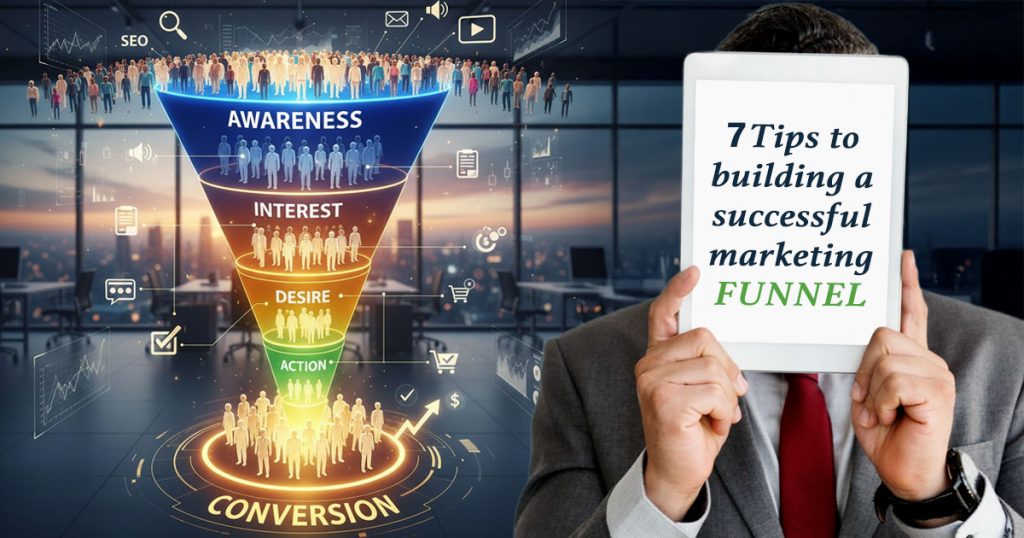Creating an effective marketing funnel helps turn prospects into loyal customers. Understanding how to build a marketing funnel allows you to map the customer journey, identify weak points, and guide people toward conversion. It’s one of the most practical ways to connect marketing, sales, and customer experience under one strategy.
1. Identify your audience and their needs
Every strong funnel starts with understanding your audience. Learn who your customers are, what they want, and the problems they face. Study their demographics, interests, and motivations. This insight helps you craft messages that feel personal and relevant.
Defining your audience also helps you target the right people at each stage. Prospects at the awareness stage might need educational content, while those at the decision stage want proof that your product works. Knowing these differences allows you to deliver the right message at the right time.
2. Set clear goals for each stage
Having specific goals keeps your funnel focused and measurable. Decide what success looks like at each stage: awareness, interest, desire, and action. For instance, a goal in the awareness stage could be gaining newsletter subscribers, while in the action stage, it’s completing a purchase.
Clear goals also help track progress through conversion rates, click-throughs, or customer engagement. You can adjust campaigns based on what works best. Measurable targets make the funnel easier to optimize and improve over time.
3. Create a compelling landing page
Your landing page often serves as the first impression for potential customers. It should clearly explain what your business offers and why it stands out. Include a short headline, a brief explanation of your service or product, and a visible call to action.
Keep the design simple and mobile-friendly. Highlight your value in a few sentences and show credibility through testimonials or visuals. A well-crafted landing page encourages visitors to take the next step in your funnel, whether that’s signing up, downloading, or purchasing.
4. Offer something valuable to attract leads
To move people from awareness to interest, offer something useful in exchange for their attention. This could be a free eBook, a trial, or exclusive access to a webinar. Valuable offers build trust and motivate users to share their contact information.
Lead magnets also help you qualify prospects. Those who download your free resource are already showing interest in your business. Once they’re in your system, nurture them through helpful content that keeps your brand top of mind.
5. Nurture relationships through consistent engagement
Building a marketing funnel doesn’t end once you capture leads. The next step is nurturing them until they’re ready to buy. Use email sequences, educational content, or product demos to stay connected. Keep communication friendly and focused on value, not constant selling.
Marketing automation tools can simplify this process. These tools track engagement, send personalized messages, and remind prospects of your offer. Consistency helps build trust, turning casual interest into buying intent.
6. Align marketing and sales efforts
Successful funnels require teamwork between marketing and sales. Both teams should understand how customers move through the funnel and when a lead becomes sales-ready. Marketing should pass qualified leads to sales only when they show genuine interest or purchase intent.
To prevent miscommunication, define what a “qualified lead” means. Regular meetings between teams ensure a smooth handoff and consistent messaging. Alignment avoids wasted effort and creates a seamless customer experience from first contact to conversion.
7. Measure and optimize your funnel regularly
A good marketing funnel is never static. Track key performance indicators like conversion rates, customer retention, and cost per acquisition. These numbers reveal where leads drop off and which stages need improvement.
For example, if people engage with your emails but don’t visit your website, your call to action might need adjustment. If visitors leave your checkout page, simplifying the process or offering discounts could help.
Regular optimization keeps your funnel effective and up-to-date with customer behavior. Small improvements in each stage can lead to better overall results and higher revenue.
Turning your funnel into a growth engine
A marketing funnel defines how your business connects with people. Understanding how to make a marketing funnel gives you the framework to deliver value at every stage. When you attract the right audience, nurture them effectively, and align your teams, conversions naturally follow.
The best funnels grow with your audience. They adapt to new trends, customer expectations, and technologies. Whether you’re creating your first funnel or improving an existing one, focus on clarity, communication, and consistency. Each touchpoint should move your prospects closer to becoming lifelong customers.
A well-built marketing funnel transforms your marketing strategy from scattered efforts into a smooth and predictable process. Keep testing, refining, and listening to your audience. You’ll see steady growth built on strong customer relationships.

